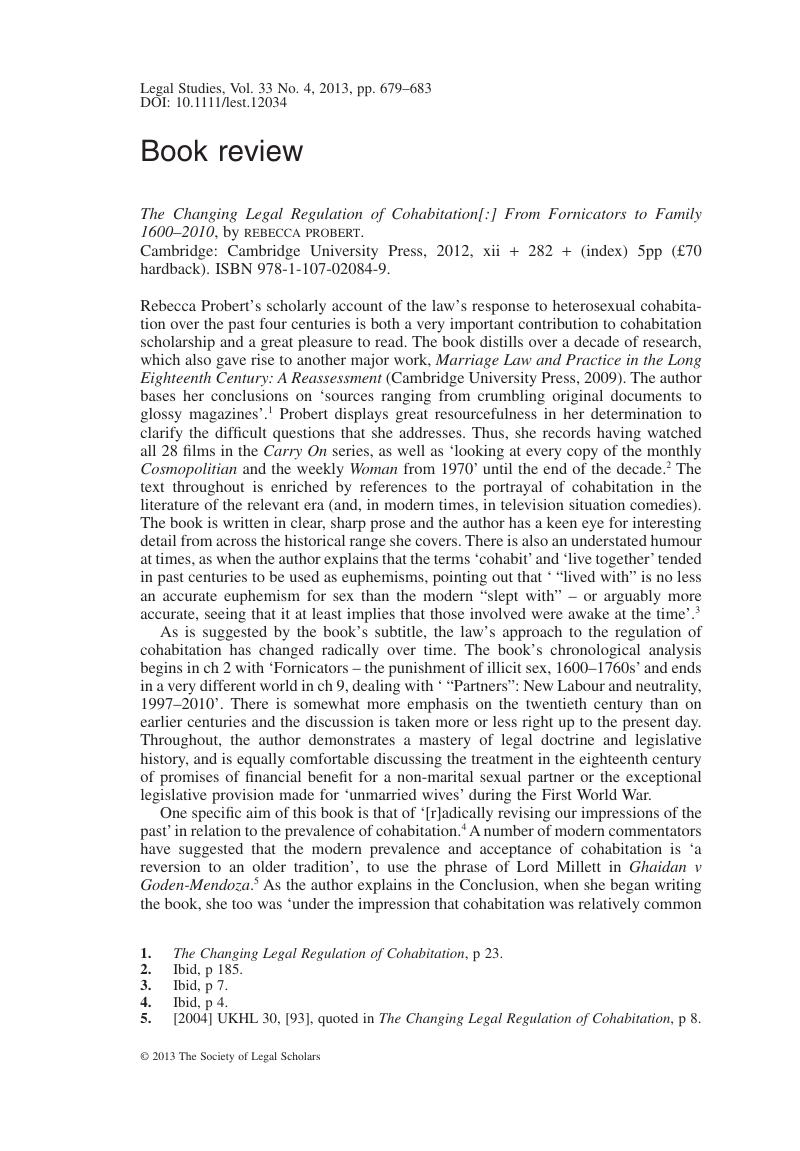No CrossRef data available.
Article contents
The Changing Legal Regulation of Cohabitation[:] From Fornicators to Family 1600–2010, by Rebecca Probert. Cambridge: Cambridge University Press, 2012, xii + 282 + (index) 5pp (£70 hardback). ISBN 978-1-107-02084-9.
Published online by Cambridge University Press: 02 January 2018
Abstract

- Type
- Book Review
- Information
- Copyright
- Copyright © Society of Legal Scholars 2013
References
1. The Changing Legal Regulation of Cohabitation, p 23.
2. Ibid, p 185.
3. Ibid, p 7.
4. Ibid, p 4.
5. [2004] UKHL 30, [93], quoted in The Changing Legal Regulation of Cohabitation, p 8.
6. Ibid, p 277.
7. Ibid.
8. Ibid, p 134.
9. Ibid, p 277 (emphasis in original).
10. Ibid, p 59.
11. Ibid, p 9.
12. Ibid, p 109, quoting V Nicholson Among the Bohemians: Experiments in Living 1900–1939 (London: Penguin, 2003) p 41.
13. The Changing Legal Regulation of Cohabitation, p 63.
14. Ibid, p 40.
15. Ibid, p 108.
16. Ibid, pp 40–43.
17. Ibid, p 42.
18. Ibid, p 13.
19. Ibid, p 198.
20. Ibid, pp 162–163.
21. Ibid, p 2.
22. Ibid, p 278.
23. Ibid, p 279.
24. Ibid, p 161.
25. See eg LA Baker and RE Emery ‘When every relationship is above average[:] perceptions and expectations of divorce at the time of marriage’ (1993) 17 Law & Human Behav 439.
26. See p 273, citing A Barlow, C Burgoyne and J Smithson The Living Together Campaign: An Investigation of its Impact on Legally Aware Cohabitants (London: Research Report to the Ministry of Justice, 2007) p 48.
27. The Changing Regulation of Cohabitation, pp 15, 115, 145.
28. Note the discussion of the international dimension: ibid, pp 281–282.




